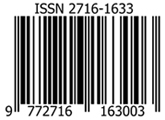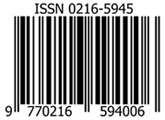EKSISTENSI TRADISI MANYANDA PADA KEHIDUPAN SOSIAL MASYARAKAT DI NAGARI TALANG, KAB. SOLOK, SUMATERA BARAT
Abstract
Full Text:
PDFReferences
Abbas, Irwan. “Memahami Metodologi Sejarah Antara Teori Dan Praktek.” Jurnal Etnohistori 1, no. 1 (2014).
Agus, Bustanuddin. Agama Dalam Kehidupan Manusia: Pengantar Antropologi Agama. Jakarta: PT. Raja Grafindo Persada, 2006.
Boestami, and dkk. Upacara Tradisional Yang Berkaitan Dengan Peristiwa Alam Dan Kepercayaan Daerah Sumatera Barat. Proyek Inventarisasi Dan Dokumentasi Kebudayaan Daerah. Departemen Pendidikan dan Kebudayaan, 1985.
Hidayati, Suci Nurul. “Makna Tradisi Manjapuik Adat Jo Pusako Pada Upacara Kematian Bagi Masyarakat Di Nagari Sikabau Kec. Pulau Punjung, Kab. Dharmasraya.” STKIP PGRI Sumatera Barat, 2016.
Iriani, Zora. “Dampak Keberadaan Tari Ilau Dan Bentuk Penyajiannya Dalam Masyarakat Selayo.” Jurnal Bahasa Dan Seni 11, no. 2 (2010).
Karim, Abdul. “Makna Ritual Kematian Dalam Tradisi Islam Jawa.” Sabda 12, no. 2 (2017).
Kartodirdjo, Sartono. Pendekatan Ilmu Sosial Dalam Metodologi Sejarah. Jakarta: Gramedia, 1993.
Koentjaraningrat. Manusia Dan Kebudayaan Di Indonesia. Jakarta: Djambatan, 2007.
———. Pengantar Antropologi II (Pokok-Pokok Etnografi). Cet. Ketiga. Jakarta: Rineka Cipta, 2005.
———. Pengantar Ilmu Antropologi. Jakarta: Rineka Cipta, 2000.
———. Sejarah Teori Antropologi 1. Jakarta: UI Press, 2007.
Maadis, Ismar. Risalah Kubuang Tigo Baleh Solok. Padang: CV. Bintang Grafika, 2008.
Mansoer, M.D. Sedjarah Minangkabau. Jakarta: Bhratara, 1970.
Rima, Grace. “Persepsi Masyarakat Toraja Pada Upacara Adat Rambu Solo’ Dan Implikasinya Terhadap Kekerabatan Masyarakat Di Kecamatan Makale Kabupaten Tana Toraja.” Phinisi Integration Review 2, no. 2 (2019).
Roza, Silvia, and dkk. Aneka Tradisi Minangkabau Menurut Adat Istiadat Kota Solok. Kerjasama Jurusan Sastra Dearah Dengan Dinas Pariwisata Kota Solok, 2011.
Shalaby, Ahmad. Kehidupan Sosial Dalam Pemikiran Islam. Amzah, 2001.
Susati, Eli RTetni, Yusrizal, and Sismai Herni. “Makna Upacara Adat Kematian Pada Masyarakat Minangkabau Di Kabupaten Padang Pariaman.” Journal Faculty of Education Bung Hatta University 3, no. 8 (2014). http://www.ejurnal.bunghatta.ac.id/?journal=JFKIP&page=index.
Syarifuddin, Amir. Minangkabau: Dari Dinasti Iskandar Zulkarnain Sampai Tuanku Imam Bonjol. Jakarta: PT. GriaMedia Prima, 2011.
Upacara Tradisional (Upacara Kematian) Daerah Sumtera Barat. Departemen Pendidikan dan Kebudayaan, n.d.
Vansina, Jan. Tradisi Lisan Sebagai Sejarah. Yogyakarta: Ombak, 2014.
Warsito. Antropologi Budaya. Yogyakarta: Ombak, 2012.
Yulika, Febri. Epistemologi Minangkabau: Makna Pengetahuan Dalam Filsafat Adat Minangkabau. Yogyakarta: Gre Publishing, 2012.
Refbacks
- There are currently no refbacks.

This work is licensed under a
Creative Commons Attribution-NonCommercial-ShareAlike 4.0 International License.




